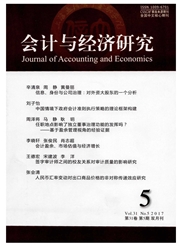

 中文摘要:
中文摘要:
互联网金融风险直接关系到互联网金融系统自身的经营和发展,对整个国家宏观经济的运行有着极其重要的影响。截至2017年2月,互联网借贷平台共有2335家,其中问题平台有55家,在监管不严、信用风险等多发情况下频繁发生平台跑路事件,所以对互联网金融风险进行科学评价显得尤为重要。本文以获得网贷之家评级认证的前百强P2P网贷平台风险管控为主要研究对象,从流动性风险、市场风险和信用风险三个维度构建评价指标体系,运用R型聚类分析对指标体系进行降维处理,得到了核心指标评价体系。在此基础上运用经典DEA模型(CCR及BCC)对其进行风控能力效率初评,根据设定的步长进行了优、良、中、差风控能力效率评级。并以优势平台为参考集,以非优势平台为评价集,运用新型广义DEA模型进行了"追赶效率"研究及投影分析,探究了非优势平台效率低下的症结所在及非优势平台向优势平台转变的可行性路径。
 英文摘要:
英文摘要:
The internet financial risk is not only directly related to the operation and development of the internet financial system, but also plays an important role in the economical operation. As of February 2017, there were 2335 network loan platforms, among which 55 platforms have problems. In context of slack supervision and high credit risk, many platform holders take the money away. Therefore, it is important to evaluate the internet financial risks. With the data of top 100 P2P loan platforms ranked by WDZJ, this paper constructs an evaluation index system including liquidity risk, market risk and credit risk, and uses the R- type cluster analysis to obtain the core indexes of the evaluation system. On this basis, the classical DEA model (CCR and BCC) is used to evaluate the efficiency of risk control, and the risk control efficiency is rated as the excellent, good, medium and bad. Taking the excellent P2P network loan platforms as the reference set and the non-excellent as the evaluation set, this paper uses the new generalized DEA model to carry on the research of the catch-up efficiency and projection analysis, and provides a feasible way for the non-excellent P2P network loan platforms turning into the excellent.
 同期刊论文项目
同期刊论文项目
 同项目期刊论文
同项目期刊论文
 期刊信息
期刊信息
